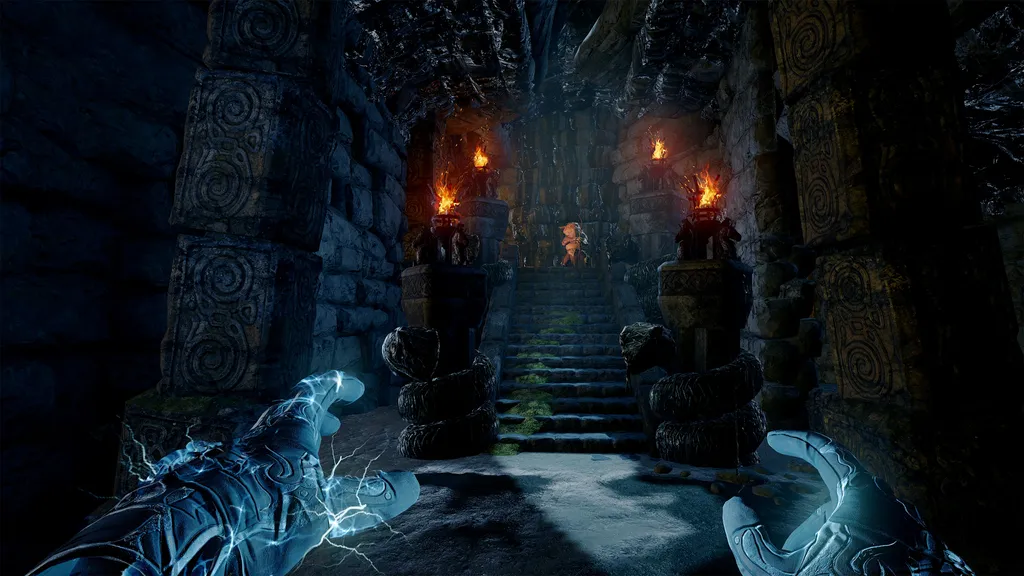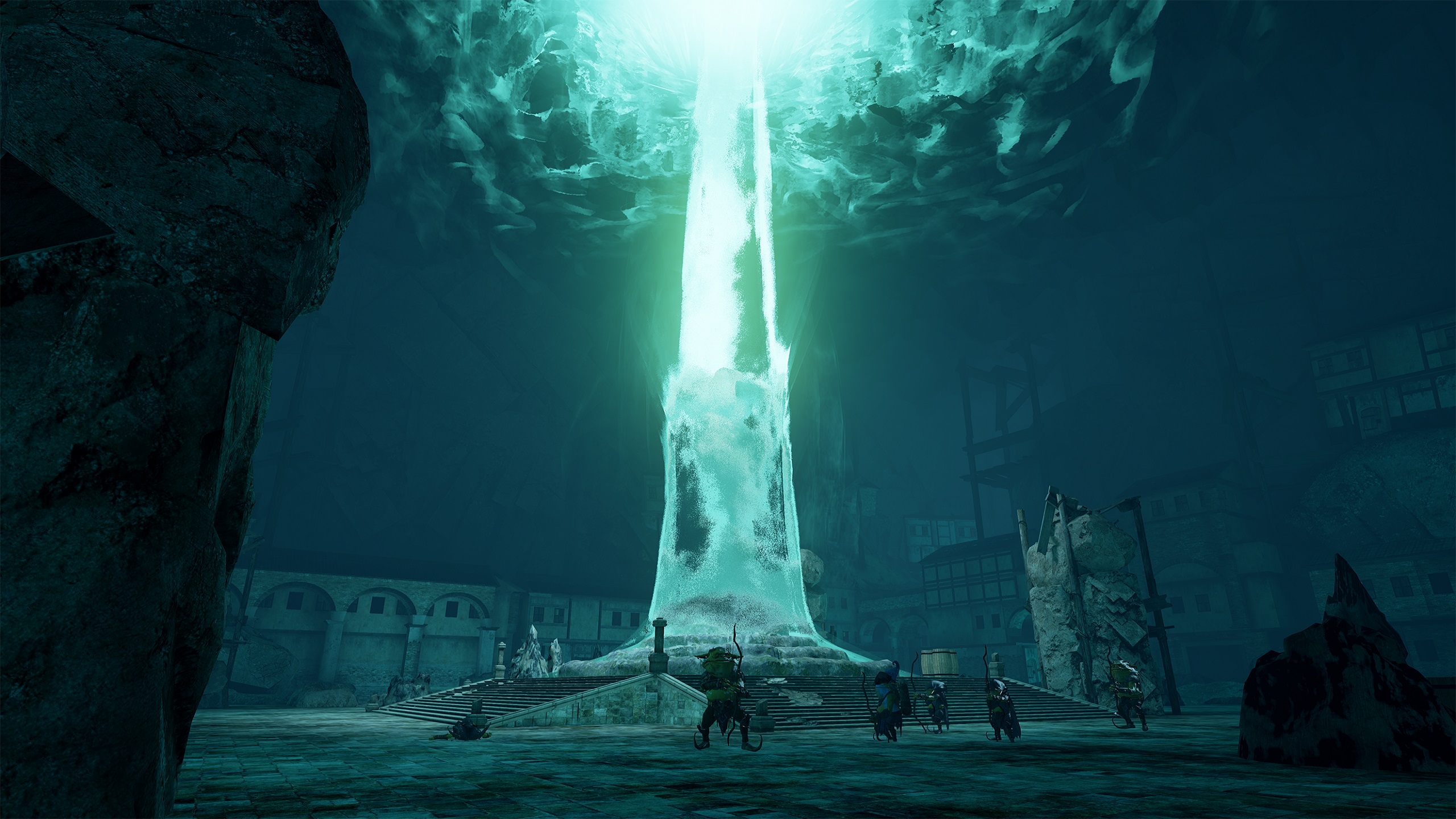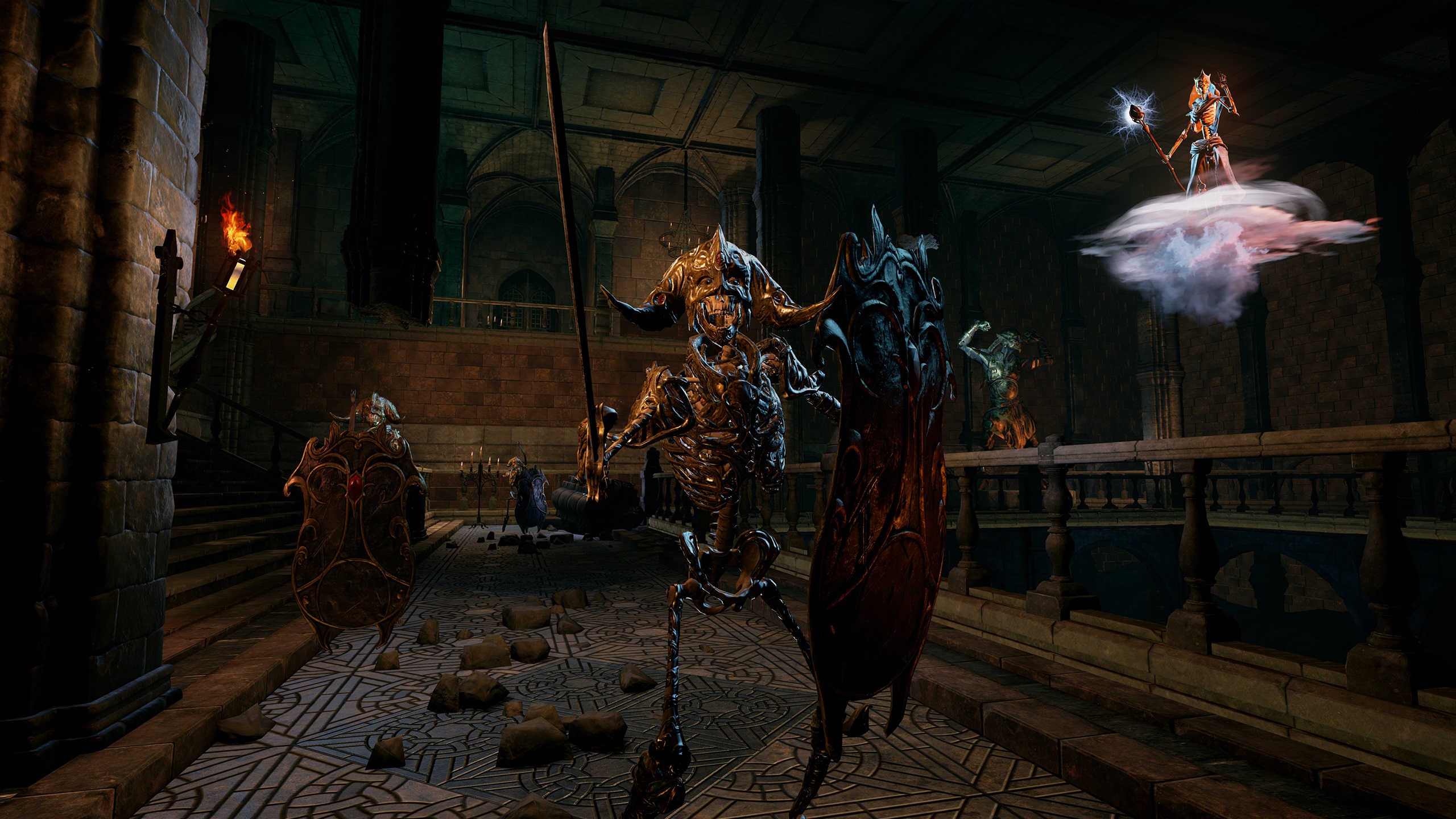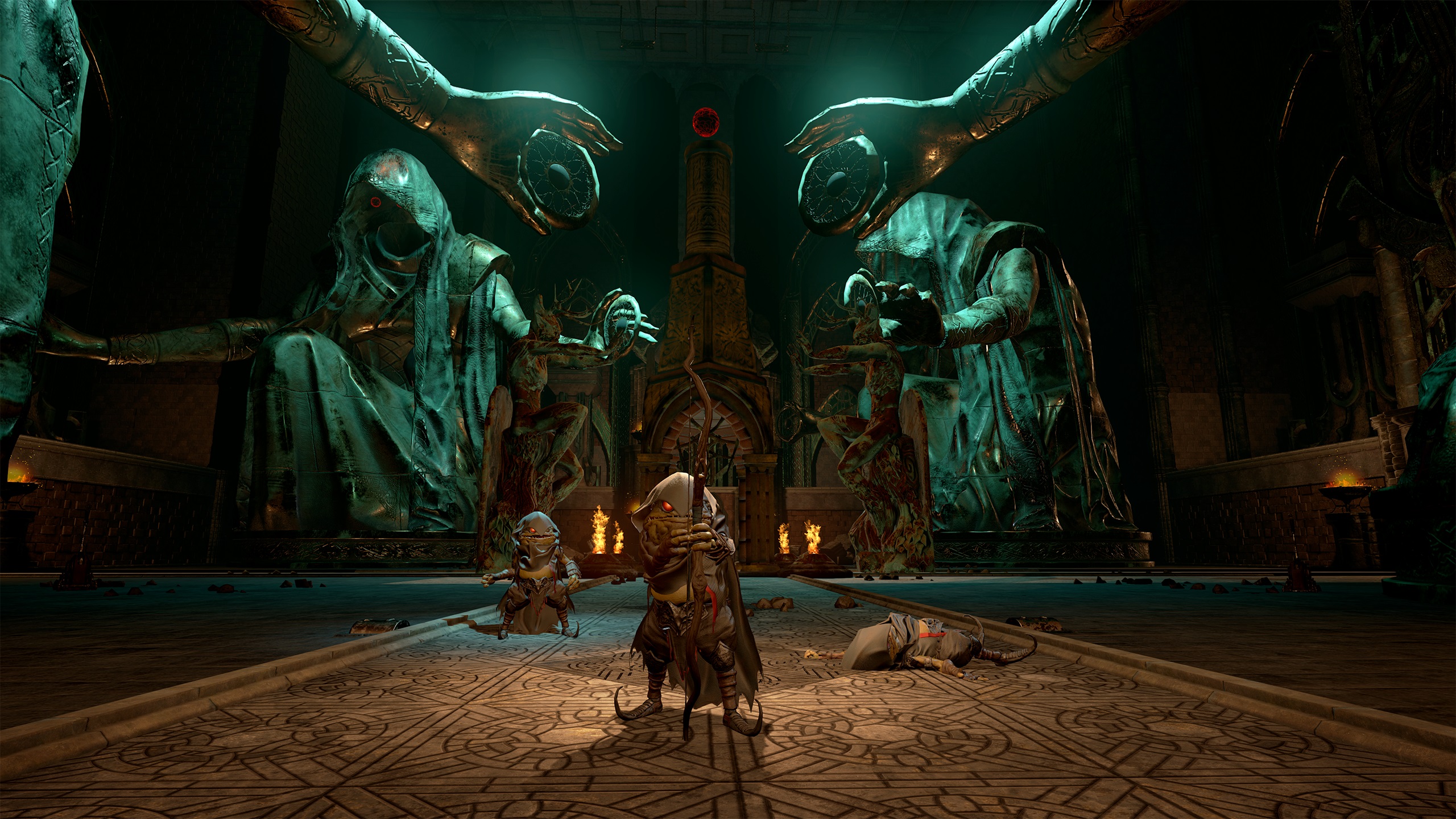As a big fan of RPGs, The Bard’s Tale is dear to me. It was a game I would play on the Apple IIe in study hall back in the day when teachers thought any kid using a computer was learning something; little did they know all I was learning about was where I could find a lucrative quest and get a stiff ale on the tough streets of Skara Brae.
While not fully 3D, early dungeon crawlers like The Bard’s Tale used a clever pseudo-3D, tile-based sprite system which was a good facsimile of 3D rendering. It was effective at the time, but it didn’t really matter since all I saw in my mind’s eye as I played was my party of stalwart adventurers traipsing through sewers, castles and towers slaying miserable kobolds and giant, fire-breathing dragons. The vision I had of walking down the wet, stone walls of Bard’s Tale’s dungeons were as real to me as walking down the hallways of my high school, even though they were just primitive computer graphics.
Now nearly 30 years later, we have a powerful new platform that can put you right into those dungeons without having to use any additional imagination. VR dungeon crawling is what the 12-year old boy still inside me has wanted for years, so I was giddy when I finally had a chance to play inXile’s The Mage’s Tale set in the sewers, catacombs and tunnels beneath Skara Brae. And you know the lore is going to be true as inXile studio head Brian Fargo was also one of the designers behind The Bard’s Tale all those many years ago.
The events of The Mage’s Tale take place between 1988’s Bard’s Tale 3 and Bard’s Tale 4, acting as a bridge and lead-in to the upcoming game. The evil wizard Gaufroi is holding Alguin, your mentor in the magical arts, and it’s up to you to find and rescue him.
My playthrough started with me descending into the depths atop a humongous hand, peering up at an even more colossal statue, which gave a dramatic sense of scale as I looked up, down and all around at the fantastic world in which I was now a player.
I’m used to teleportation-style locomotion in VR games, so it was easy to hop off the hand and into the dungeon proper using the thumbstick on the Oculus Touch, but I was also happy to find out you could use a more direct style of locomotion. With the other thumbstick you can hop forward, backward, left and right, and it really felt like moving through the old 10-foot by 10-foot tile-based Bard’s Tale games back in the day, only I could look around and pivot my body with the other stick. It was all very intuitive, I picked it up within seconds and the tiny hops turned out to be the movement style I preferred.
Keeping with the design of the previous games, The Mage’s Tale features both combat and plenty of environmental puzzles. Some you have to solve to progress through the levels, but others you can completely skip, although you’ll be missing out on precious treasure and experience if you do.
As you’re a mage, your primary assets are your spells, mostly based around the elements of fire, wind, ice and electricity. Many of the puzzles also require the use of your elemental arcanery, so you might burn down a wooden wall with a fireball or zap an energy crystal with a lightning bolt so it becomes charged and opens a door elsewhere in the level.
Combat itself is very intuitive, and you can bring up a mystic shield (I assume this is Ybarra’s Mystic Shield, but I neglected to ask) to block incoming projectiles while hurling fireballs, lightning bolts and ice javelins at your foes. Aim is handled by looking at the opponent you wish to target, pulling the trigger on the right Touch controller and flicking your wrist. I personally like chucking my fireballs granny-style to demoralize the incoming goblin hordes to the fullest. And while I only played through the first level today, I did fight a massive giant boss at the end of the level, so I imagine there will be more of those types of encounters in the full game.
As you progress through The Mage’s Tale, you’ll find a variety of components and spell recipes that you can toss into the mouth of your astral amphibian buddy (I call him Astromordius J. Frog), who will teleport back to your alchemy lab for you to use later. Step up to the cauldron, drop in a few components and stir to make new spells.
It wouldn’t be a Bard’s Tale-style game if it took itself too seriously, and one of the spells I ended up crafting combined fire, bounce, triple shot and a bottle simply labeled “party” to create an elastic tri-blast that exploded into confetti when it hit my intended target, complete with accompanying party horn noises. All in all there are 30 different ingredients you can find in the game, so that adds up to a lot of different combinations and enhancements to the original four base elements.
Like any good role-playing game, you level up as you gain experience, and while the leveling system is pretty basic, you can pick to improve aspects such as your health, shield power and magic recharge rate as you progress. You can even reach behind your back and pull out your spell book to see which upgrades you’ve acquired, each marked with a sexy red wax signet seal.
inXile and old-school Interplay have never been afraid to reference their other games or tie together game worlds, and The Mage’s Tale is no exception. While exploring just the first level I spotted a skull on the ground that spouted several of Morte’s best lines from Planescape: Torment. I also ran across a magic mouth upon a wall during one of the puzzles, found Roscoe’s Energy Emporium and stumbled upon a group of 99 berserkers behind a secret door. Although I didn’t personally hear it during my demo, Brian Fargo also told me that there are some places where you can hear a faint drone of Charlie Mops’ Beer Song coming from the tavern above. Speaking of songs, the game also features several authentic Gaelic melodies performed by artists such as the MacKenzie Sisters and Peigi Barker, the voice of young Merida in Brave.
All in all I was very happy with what I played today, and although I just spent 30 or so minutes under Skara Brae, the full experience should be about 10 hours long spread out over 10 cavernous levels. I can’t wait to jump in for more! Luckily that won’t be long as The Mage’s Tale should be out sometime this summer for Oculus Rift with Touch, and on other platforms sometime in the future.




























